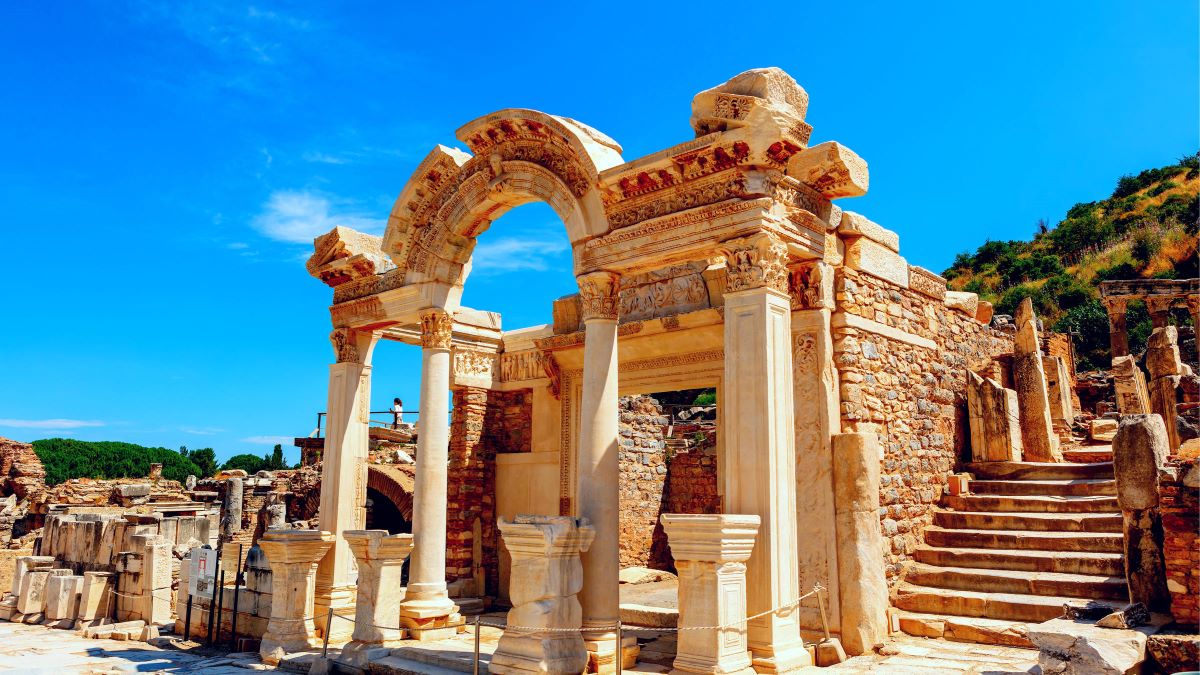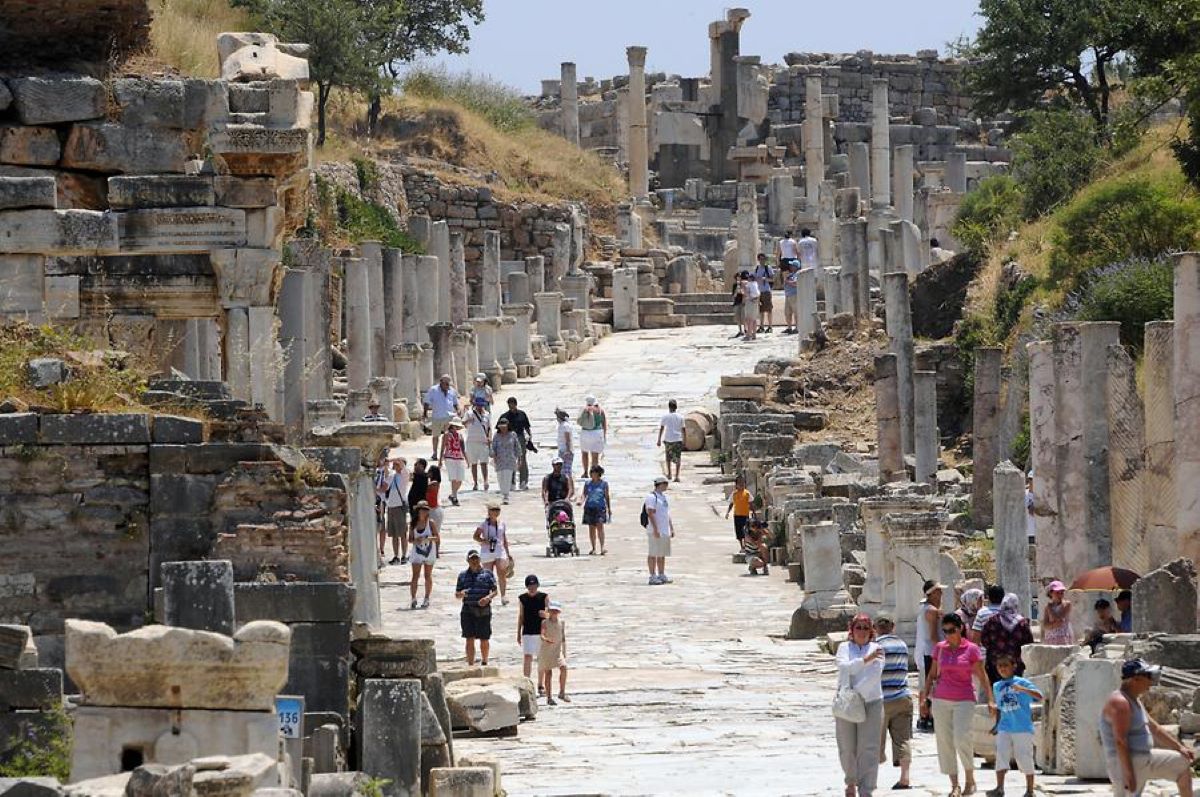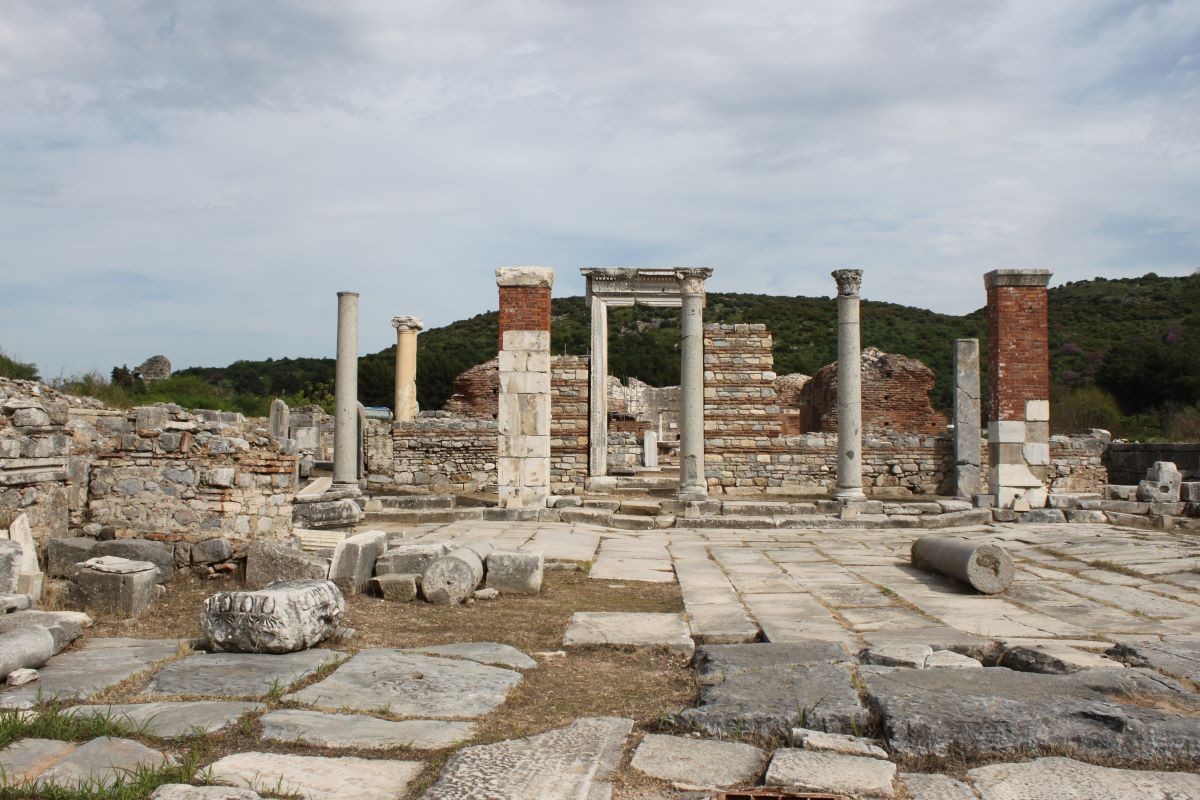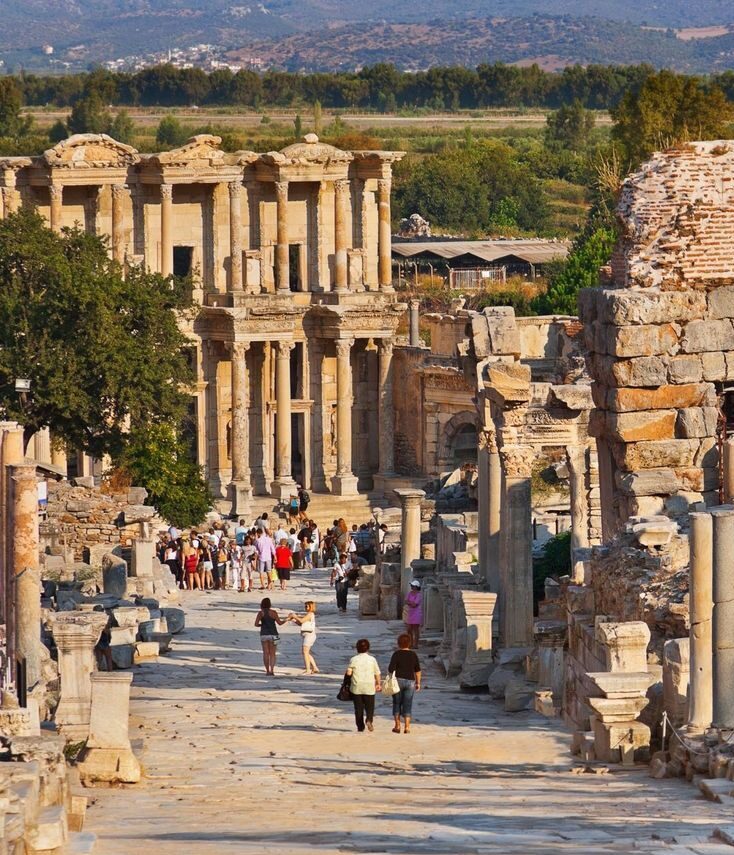The ancient city of Ephesus is a site of remarkable historical significance, with a…

The Religious Practices of the Roman and Hellenistic Eras in Ephesus: Temples, Altars, and Cults
Ephesus was a renowned ancient city that flourished for centuries and was known for its rich history and diverse religious practices. Religion held a central position in the daily life of Ephesus during the Roman and Hellenistic eras, influencing various aspects of its culture and society. The religious practices of Ephesus were intertwined with the city’s identity and played a significant role in shaping its traditions, customs, and way of life. Temples, altars, and cults were integral components of Ephesian religious practices, and their influence permeated all aspects of the city’s social fabric, from the grandiose temples that were marvels of architectural splendor to the humble household altars in private homes. The religious practices of Ephesus were a crucial aspect of its history and contributed to its unique cultural heritage.
Temples in Ephesus:
Ephesus was renowned for its magnificent temples, which were at the heart of the city’s religious practices. The most iconic among them was the Temple of Artemis, also known as the Temple of Diana, which was considered one of the Seven Wonders of the Ancient World. This colossal temple, spanning over 400 feet in length, was dedicated to the Greek goddess Artemis, the goddess of fertility and the hunt. It was a major pilgrimage site and a center of worship, attracting devotees from all over the region. The Temple of Artemis was known for its architectural splendor, adorned with marble sculptures and adorned with precious metals, and it was a site of elaborate religious ceremonies, festivals, and rituals that were central to the spiritual life of Ephesus.
In addition to the Temple of Artemis, Ephesus was home to other notable temples. The Temple of Hadrian was dedicated to the Roman Emperor Hadrian and served as a symbol of Roman influence in the city. This temple was known for its intricate architectural details, including a richly decorated facade adorned with reliefs depicting scenes from mythology and the imperial cult. Another significant temple in Ephesus was the Temple of Serapis, dedicated to the Greco-Egyptian god Serapis, a syncretic deity combining elements of Greek and Egyptian beliefs. This temple reflected the cultural diversity of Ephesus, as it blended Greek, Roman, and Egyptian influences in its religious practices.
The temples of Ephesus were not only places of worship, but also important social and cultural centers. They hosted various religious ceremonies, processions, and festivals that brought together the community and played a pivotal role in shaping the religious identity and practices of the people of Ephesus during the Roman and Hellenistic eras. The temples were also adorned with sculptures, inscriptions, and offerings, reflecting the spiritual devotion and artistic expression of the Ephesian people. Today, although the grandeur of the Temple of Artemis has faded over time, the remains of these ancient temples stand as a testament to the religious significance and architectural excellence of Ephesus in its heyday.
Altars in Ephesus:
Altars were not only important for communal worship and offerings in Ephesus, but they also held a significant place in the daily lives of individuals and families. Public altars were indeed found in various locations throughout the city, serving as focal points for community rituals and ceremonies. These public altars were often grand and adorned with intricate decorations, inscriptions, and offerings, and they were dedicated to various deities or served specific purposes within the religious practices of the city.
In addition to public altars, household altars were common in private homes in Ephesus. These household altars were personal and private spaces where families conducted their own religious rituals and made offerings to their chosen deities. They were often smaller in scale but held deep significance for the families who maintained them. Household altars were adorned with personal items, such as family heirlooms, sculptures, and inscriptions, and they were considered a vital part of the home and the spiritual life of the Ephesian people.
Altars in Ephesus played a crucial role in connecting individuals and families with their chosen deities. They were not only places of worship, but also spaces for communication, devotion, and expression of personal beliefs. Altars were considered sacred and were treated with reverence, and they were used as a means to seek blessings, protection, and guidance from the gods. They were often the center of household rituals, including offerings, prayers, and ceremonies, which were passed down through generations, reinforcing the religious traditions of Ephesus.
Furthermore, altars in Ephesus were not limited to just one religious tradition or deity. Due to the diverse cultural influences in Ephesus during the Roman and Hellenistic eras, altars were used for various religious practices and cults, reflecting the syncretism and tolerance of different beliefs in the city. This resulted in a rich tapestry of religious expressions and practices that coexisted in Ephesus, making altars a vital aspect of the religious landscape of the city.
Cults in Ephesus:
Ephesus was a melting pot of diverse religious cults during the Roman and Hellenistic eras, each with its unique practices and beliefs. One of the most prominent and revered cults was the cult of Artemis, which revolved around the worship of the Greek goddess Artemis and held a special place in the hearts of the Ephesian people. The Artemis cult was intricately woven into the social fabric of Ephesus, permeating various aspects of daily life and shaping the city’s culture. Elaborate rituals, festivals, and processions were carried out in honor of Artemis, drawing pilgrims from all over the region who sought her blessings and protection.
Another significant cult in Ephesus was the Imperial cult, which centered on the worship of the Roman Emperor and was widespread due to the city’s close ties with Rome. The Imperial cult was a political and religious practice that involved offering sacrifices and homage to the Roman Emperor as a divine figure. Ephesus, being an important port city and a center of Roman influence in Asia Minor, had a strong presence of the Imperial cult, and its followers held the Emperor in high esteem.
In addition to the Artemis cult and the Imperial cult, Ephesus was also home to various other cults that showcased the city’s religious diversity. The cult of Isis, an Egyptian goddess associated with fertility, magic, and motherhood, had followers in Ephesus who practiced their own rituals and ceremonies. The cult of Dionysus, the Greek god of wine and ecstasy, was also present in Ephesus, with its own set of unique practices and celebrations. These different cults added layers of complexity and richness to the religious landscape of Ephesus, reflecting the city’s cosmopolitan nature and its openness to diverse religious beliefs.
Syncretism in Ephesus:
Syncretism played a pivotal role in shaping the religious practices in Ephesus during the Roman and Hellenistic eras. As a major cultural and trade hub, Ephesus was exposed to diverse influences from different regions, resulting in a unique blend of local Anatolian traditions with Roman and Hellenistic cultures. This syncretism gave rise to a distinct religious landscape in Ephesus, characterized by a fusion of Greek, Roman, and local Anatolian elements.
An exemplary manifestation of syncretism in Ephesus was evident in the Artemis cult, which was a central aspect of the city’s religious life. While the worship of Artemis was rooted in Greek mythology, the Artemis cult in Ephesus incorporated local Anatolian beliefs and practices, resulting in a distinct form of Artemis worship that deviated from the traditional Greek worship of the goddess. The Ephesian Artemis was often depicted with multiple breasts and was associated with fertility and childbirth, reflecting the Anatolian fertility cults. The Artemis cult in Ephesus also incorporated elaborate rituals and festivals, such as the Ephesia, a grand procession held in honor of the goddess, which included music, dancing, and sacrifices, drawing influences from local Anatolian customs.
Furthermore, the syncretism in Ephesus was evident in the Imperial cult, which was the worship of the Roman Emperor. Ephesus, being a prominent city in the Roman Empire, had a strong influence of Roman culture and politics. The Imperial cult in Ephesus incorporated local Anatolian practices, where the Roman Emperor was revered as a divine figure and worshipped alongside the traditional Anatolian deities. This blend of Roman and local Anatolian elements in the Imperial cult showcased the syncretic nature of religious practices in Ephesus during that period.
The religious practices of the Roman and Hellenistic eras in Ephesus were multifaceted and deeply ingrained in the city’s culture and society. Temples, altars, and cults played integral roles in the spiritual life of Ephesus, providing avenues for worship, rituals, and festivals. However, what made Ephesus truly unique was the syncretism of local Anatolian traditions with Roman and Hellenistic influences. This blending of different cultural and religious elements resulted in a distinct religious landscape in Ephesus, showcasing the city’s ability to adapt and assimilate diverse beliefs and practices. The religious practices in Ephesus were not only a reflection of the broader Roman and Hellenistic influences but also a testament to the local Anatolian traditions that shaped the city’s religious identity. Overall, the religious practices of the Roman and Hellenistic eras in Ephesus were a rich tapestry of beliefs, rituals, and cults that exemplified the complex and diverse nature of ancient religious practices in this historic city.




This Post Has 0 Comments